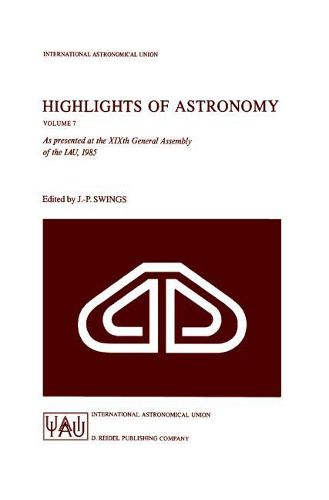Readings Newsletter
Become a Readings Member to make your shopping experience even easier.
Sign in or sign up for free!
You’re not far away from qualifying for FREE standard shipping within Australia
You’ve qualified for FREE standard shipping within Australia
The cart is loading…






Ken Freeman I would like to pick out a few items that I found particularly interesting. The choice probably reflects my ignorance, because many of these topics are no doubt more known to most of you. I am fairly sure that some of them are basic and important. We will start with the first session. There were three closely related papers on the evolution of massive stars, the formation of open clusters and associations and the IMF. We learned that clusters appear to form in initially bound clouds 6 of masses between 10’+_10 M , but star formation is a destructive process. Most of the gas is@ lost and the remaining stars then find themselves in an unbound system, which naturally disperses on a dynamical time. As a result of this, star formation is typically a fairly inefficient process, at least on the scale of open clusters. However (as Heggie pointed out) it seems to be somewhat more efficient on smaller scales, as evidenced by the fairly high incidence of binary stars. To form a bound cluster requires a higher efficiency of star formation, typically 30% or more, and we see how the three papers of this morning session relate: the initial mass function and the timing of where and when the DB stars form dictate the likely fate of the system.
$9.00 standard shipping within Australia
FREE standard shipping within Australia for orders over $100.00
Express & International shipping calculated at checkout
Ken Freeman I would like to pick out a few items that I found particularly interesting. The choice probably reflects my ignorance, because many of these topics are no doubt more known to most of you. I am fairly sure that some of them are basic and important. We will start with the first session. There were three closely related papers on the evolution of massive stars, the formation of open clusters and associations and the IMF. We learned that clusters appear to form in initially bound clouds 6 of masses between 10’+_10 M , but star formation is a destructive process. Most of the gas is@ lost and the remaining stars then find themselves in an unbound system, which naturally disperses on a dynamical time. As a result of this, star formation is typically a fairly inefficient process, at least on the scale of open clusters. However (as Heggie pointed out) it seems to be somewhat more efficient on smaller scales, as evidenced by the fairly high incidence of binary stars. To form a bound cluster requires a higher efficiency of star formation, typically 30% or more, and we see how the three papers of this morning session relate: the initial mass function and the timing of where and when the DB stars form dictate the likely fate of the system.